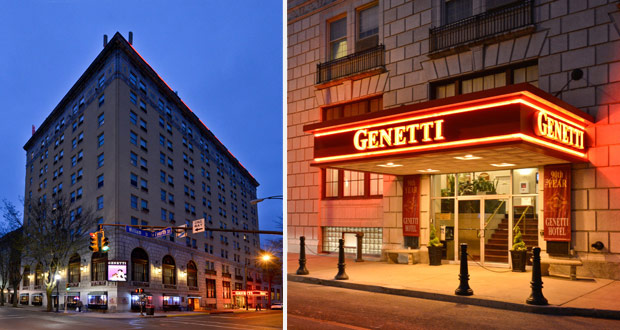About a year ago, Best Western saw some white space in the lodging industry—there weren’t a lot of options out there for travelers in the upper-economy/lower-midscale segment. This led the company to enter that space with SureStay Hotel Group. Best Western’s instincts were spot on, and today, the brand has more than 100 hotels either open or in the works.
One of several brands introduced by Best Western in the last several years, SureStay was originally intended to be a white-label franchise separate from Best Western. However, the company quickly realized that separating it from their portfolio would be a mistake. “Linking SureStay to Best Western gave both developers and guests confidence in the brand,” Ron Pohl, Best Western’s chief operations officer, explains. “So, it became SureStay by Best Western, giving owners access to our rewards program, our online channels and distribution networks, and the support and services we provide our hotels.” The brand is also Best Western’s first foray into the economy segment, which was an area where the company has lots of room to grow.

SureStay Hotel Group encompasses three sub-brands that fall into the upper economy and lower midscale market segments. There’s SureStay and Sure-Stay Plus, as well as a soft brand, the SureStay Collection. SureStay hotels are not subject to PIPs, are free to use preferred vendors, and have a competitive fee structure. Hoteliers also have access to Best Western’s distribution systems and support services. SureStay hotels must meet a minimum TripAdvisor score of 3.5 or above —a unique benchmark in the industry. “If they slip below 3.5, we have to consider whether to keep them as a SureStay property,” David Kong, CEO of Best Western International, says.
“And on top of these requirements, they also must meet requirements regarding overall experience and service, such as unannounced inspections, minimum Guest Satisfaction Survey scores, and a satisfaction guarantee. While we aren’t dictating particular brand standards, we do have pretty strong requirements for an economy segment hotel.”
While some hoteliers may be wary of tying their franchises to a TripAdvisor score, Pohl says that since the brand’s launch, not a single hotel has gotten in trouble because of the TripAdvisor minimum requirement. “Everything has been quite positive thus far,” he notes.
By adding SureStay to Best Western’s portfolio, the company also took a major step in increasing its scale. “Scale is crucially important,” Kong asserts. “With scale comes negotiating power and options and solutions for guests.” Increased scale has allowed Best Western to invest more in their infrastructure and spread costs across a bigger portfolio, reducing impact on owners. “It also gives us more leverage with OTAs,” he says. “When you’re able to offer more solutions, you’re less dependent on OTAs. As we grow, we gain more leverage to negotiate more advantageous commercial terms.”

Pohl adds that Best Western’s advantageous OTA terms, is a major factor in bringing hotels into SureStay’s fold. “When you’re an independent hotel, you have no control over OTA channels. The fact that you can stay independent, but are now a part of a bigger entity that enjoys favorable OTA terms is extremely appealing.”
While Best Western was assured that SureStay would generate interest among hoteliers, what surprised them was that once those hoteliers became SureStay properties, they wanted to invest even more in their hotels. “We thought that hotels joining SureStay would embrace the fact that they wouldn’t have to do any PIPs, but what actually happened was that many of the hotels are coming in with a budget for improvements so that the property can be repositioned to perform better in its market. We even have people buying an asset to turn it into a SureStay. This was unexpected, and obviously very welcome,” Pohl says.
“I review every single application,” Kong adds. “What’s interesting is the agility of these applications. People are buying hotels and spending $1 million, $2 million to renovate the hotel to reposition it, and they choose SureStay. It goes to demonstrate that what we set out to do—which is to become a leader in the economy space—is working. People are coming to us and want to invest in our brand.”
Kong and Pohl expect the brand to continue to grow over the coming years. “We heard from developers that they wanted a fair franchise. We really worked hard to make sure that we have fair franchise terms, a decent fee model, and ‘best-in-class’ support for them. Based on initial feedback, everyone is quite happy with the brand and have said that it was a good financial move for them,” Pohl adds.
Top photo: SureStay Hotel in Mission, Texas










